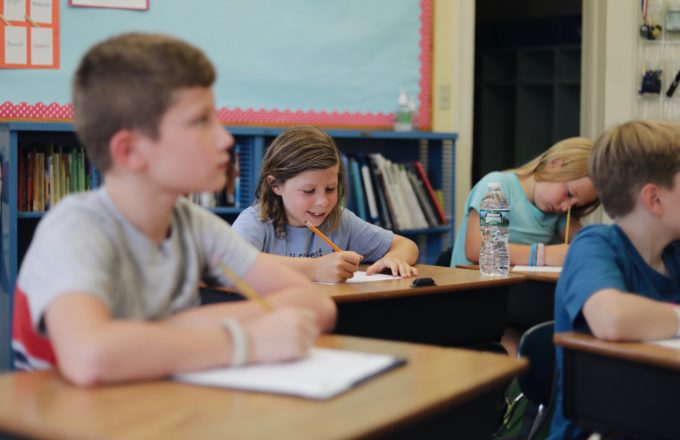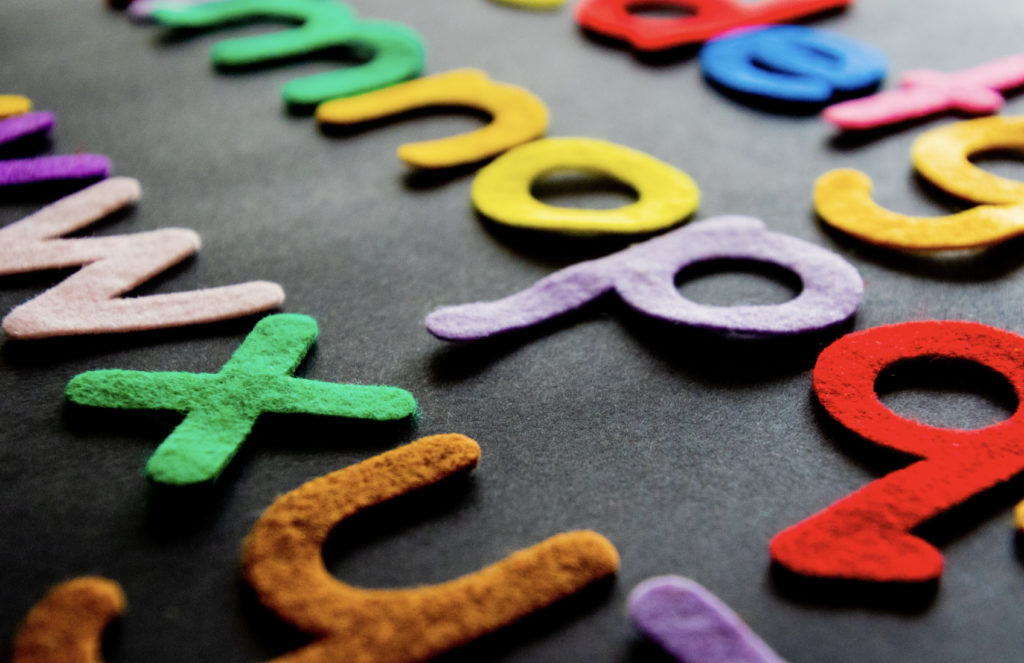This post is part of a series about helping students with LBLD experience academic success.
Read Erin’s other blog posts:
Each year, I do a personal narrative writing unit with my seventh grade students. There have been years where I’ve received some really moving, thoughtful narratives…. and years where a student tells me the only event he can think of to write about was the time he accidentally shaved off part of an eyebrow. (Yes, that particular student did find that it was a little more difficult than he thought to stretch that experience out into a full story!) Usually, it’s a bit of a mixed bag. This year, in working towards my writing goals, I decided to spend more time front-loading narrative writing skill instruction. I used mentor texts paired with a series of shorter narrative writing prompts so that they could really have time to reflect on several different events or subjects and choose one for their final piece that would ideally have a little more narrative heft.
Teach the elements of a narrative
To begin, I reviewed the three main types of narrative essays: personal (about your own life), biographical (about someone else’s life), and fictional. I wanted to make sure that my students understood the differences and also the connections between these genres, and that while a personal narrative is non-fiction, it should feel like a story, not like an essay. There have been years when I’ve been able to assign all three types of narrative, and I’ve really enjoyed having the students choose someone to interview for their biographical narrative. However, this year I decided to focus solely on the personal memoir. We reviewed literary elements such as plot, conflict, and character, and talked about how a personal narrative includes these elements, just like a fictional story. We talked about the elements that make up a plot, such as an inciting incident or conflict, rising action, and a climax. We then read an example of a personal narrative to identify each part of the plot and look at how conflict functions in a personal memoir.
Make brainstorming a hands-on activity
My first official assignment as part of the personal narrative unit this year was to ask students to bring in a “mystery bag” containing five important items that symbolize something about them and/or their childhood or life. This assignment was a huge success and a lot of fun! My students brought photos of family members or pets, items that reminded them of a story from their childhood, and, of course, well-loved stuffed animals. They all loved sharing the stories behind their objects, and some went into great detail. Trying to harness this momentum, I asked students to choose one object to keep on their desk as inspiration, and to write the story of that object with plenty of description. The students’ stories were descriptive, and I think it really helped to have the object right there on their desk as a visual. I told them that the stories and memories they shared that day could all turn into a wonderful personal narrative – it was really one of the best brainstorming activities I could have imagined.
Use mentor texts
After this introductory activity, I moved on to some skill instruction and shorter writing assignments paired with mentor texts. The use of mentor texts is always important, but particularly so when it comes to this genre. My goal in choosing mentor texts was to focus on specific skills that I wanted to teach explicitly, but also to help students see that a personal narrative is, at its core, a story. First, we read the chapter called “Harlem” from Walter Dean Myers’s memoir Bad Boy. For this assignment, I asked students to highlight details about the setting. Following our reading, I assigned students the task of brainstorming details about a setting in their lives and writing a short essay focusing on that setting. Next, we read “Nintendo Saved Me” by Ned Vizzini, and I assigned students the task of writing about a favorite toy from their childhood. The last piece I assigned in this introduction to personal narratives was a “school story.” for this, I like to use either “Let’s Hear it for the First Grade” (another chapter from Bad Boy) or Patricia Polacco’s children’s book Thank you Mr. Faulker, or both.
Teach voice
One topic I really wanted to explicitly teach and review with my students in this unit was using voice in writing. We talked about the three elements of voice: personality, color, and emotion. For a creative writing warm-up related to emotion, we read a short passage I had written about an incident involving a class pet. I had students work in groups to try to add personality, color, and emotion to the straightforward and simple narrative. Then, I gave each student a card with a different emotion written on it and asked them to rewrite this story so that their assigned emotion was clear in the tone and voice of their narrator. Each student read their story and their peers had to try to guess the emotion they were attempting to convey. I instructed students to make it fairly obvious for this exercise – but we talked about how sometimes the emotion in a story is more subtle. For a mentor text on voice, I used an excerpt from a David Sedaris essay published in a magazine specifically for students (and therefore edited appropriately!). The excerpt is entitled “Tricked”, and tells a hilarious story of one Halloween when Sedaris’s neighbors come trick-or-treating one day too late. Following our reading of the story, we talked about the use of Voice and identified examples of personality, color, and emotion in this mentor text.
Teach structure
The last topic I covered with students, before assigning their final writing piece, was the structure of a personal narrative. I wanted students to understand that a narrative often contains four parts: the hook or opener, the set-up (introducing the story), the zoom-in (the story itself), and a zoom-out where the author reflects and maybe infers a lesson learned from the experience. For this topic, we read Annie Dillard’s “The Chase” and identified each of those four structural elements in her personal narrative.
Assign a personal narrative
Finally, it was time for students to produce their own longer personal narrative. For this assignment, as for all assignments, I provided an organizer for students to fill out to make sure they included all necessary elements. Once students completed a first draft, I also gave them a checklist so they could make sure they included those elements, such as a strong hook, sensory description, emotion, dialogue, and a clear setting. Students were required to use this checklist to mark up and add to their first draft before submitting a final version of their narrative.
I found that the quality of my students’ personal narratives was consistently improved from past years as the result of this focused instruction, practice, and use of checklists to ensure they had included certain elements in their stories. As with all of the writing units described in this blog series, by taking the time to explicitly teach and practice specific writing skills, I was able to help my students produce writing that was more sophisticated, more descriptive, and more effective than they might have created if given the assignment without this front-loaded instruction. Perhaps even a story about an accidental half-eyebrow-shaving could have been improved upon, if I had only given that student these same tools!



